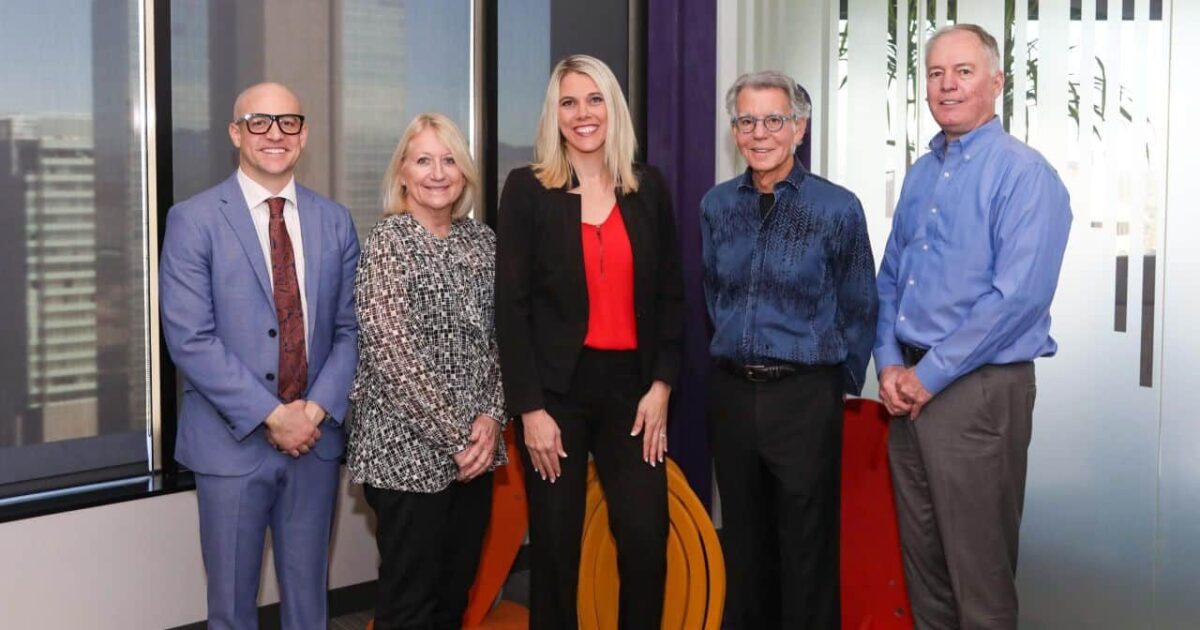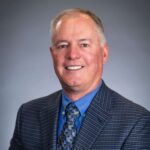

Ambassador Event: Addressing Housing Supply in the Region
Published: 02/12/2024
Housing supply directly impacts a region’s growth potential and competitiveness, serving as a key driver for quality of life and affordability of a region. To this end, it is a topic the Greater Phoenix Economic Council (GPEC) continually monitors.
On Jan. 30, GPEC hosted the Addressing Housing Supply in the Region Ambassador Event in which local experts from the public and private sectors shared their unique viewpoints on how communities and business leaders can support responsible housing development in the region.
The panel consisted of:
- Darlene Newsom, Consultant, Vitalyst Health Foundation
- Dea McDonald, President, Brookfield Properties Development
- Elliott Pollack, CEO, Elliott D. Pollack and Company
- Mayor Julia Wheatley, Town of Queen Creek
- Tim Bourcet (Moderator), VP Corporate Development & Community Engagement, GPEC
Outlining the issues in housing supply and affordable housing
The balance of supply and demand, rising material prices throughout the national ecosystem and labor needs in the post-pandemic economic environment pose challenges for maintaining steady and affordable housing inventory. Pollack highlighted that after the Great Recession, the region underbuilt in the 2010s, leading to an insufficient housing supply in the 2020s. Today’s high mortgage rates are causing homeowners to delay or hold off on selling properties as they hold onto their low rate. “75% of existing mortgages have a rate of 4% or less,” Pollack added. In contrast, homebuilders have a lot more flexibility than owners of existing homes, as they can adjust, lower prices and add amenities.
As the population segment of 27-to-34-year-olds becomes increasingly involved in the housing market, Pollack suggested that large demand for homes, driven by both population growth and an increase in employment rates, presents challenges for current supply and affordability levels.
Greater Phoenix remains one of the most affordable markets in the U.S., said Pollack. According to the NAHB/Wells Fargo Q3 2023 housing opportunity index, Greater Phoenix is over 20% more affordable than San Diego and Los Angeles, and continues to be more affordable than major competitive markets, including Denver, Seattle and Las Vegas. The rate of increase in apartment pricing will continue to decrease or remain the same throughout 2024, Pollack said.
Read more on the current economic state in Greater Phoenix
Collaboration to serve a multi-faceted industry
Collaboration between businesses, nonprofits and local government is one of the key ways to address housing supply needs in the region. On a local level, understanding the requirements of developers and residents is an important factor.
“We have worked very hard to develop a good relationship with our development community and it is something that is always top of mind as far as reducing regulations, streamlining things to make it easier for the development community,” Wheatley said, adding that the economic implications of large employers, such as LG Energy Solution in Queen Creek, should also be considered when addressing housing growth.
Pollack emphasized the role of local government in creating housing opportunities, sharing it can “make the process easier, more affordable, less bureaucratic and more market friendly.” He also encouraged exploring alternatives, such as a 40-year loan, to support affordability.
Newsom, who has led the development of more than 1,000 affordable housing units, including the first full-service shelter for homeless women in Maricopa County, spoke about the importance of partnerships and working closely with cities to determine co-location of services for efficiency. Newsom agreed that it is “all about partnerships and where we really have to strategize together,” indicating the focus should not only be on driving housing affordability through inventory, but also in supporting services such as affordable housing to keep individuals housed.
A comprehensive sustainable strategic approach: affordable housing initiatives and land use
The solution to the current housing supply issue is multifaceted and can be mitigated through a mix of initiatives, such as innovative financing options, higher-density developments and strategy building to ensure housing affordability and sufficient inventory.
From a homebuilder perspective, McDonald emphasized the importance of partnerships with municipalities and communities in large-scale development projects, adding, “We also embrace the community because we want to make sure the community understands what we're proposing to do before we go out and do it and make sure we have them as partners in these projects.”
Community acceptance for increased building density is essential given potential concerns about obstructed views, increased traffic, and perceived decreases in property values, Newsom said. The development of condominiums, townhouses, and adaptive reuse to “encourage and have flexibility with that generational housing” is also important, Wheatley added.
Newsom pointed to innovative approaches from other regions such as co-locating with city and senior services, the use of accessory dwelling units, or built-to-rent homes, which are horizontal apartments with disconnected units.
The local workforce should be the key target for affordable housing strategies, debunking some common misconceptions about who lives in affordable housing structures. Newsom said that 85% of residents at UMOM housing are employed in the local community. “They’re working at your Walgreens, your Albertsons, and they deserve the opportunity to be able to live in the community in which they work,” Newsom said.
Maintaining the mandated 100-year water supply is a pivotal consideration for homebuilders and companies. Wheatley shared insight on measures being taken to ensure that supply in Queen Creek, including a current agreement to receive more than 2,000 acre-feet (AF) of water from Cibola National Wildlife Refuge at the Colorado River, an additional sales agreement to receive over 5,000 AF of water from Harquahala groundwater basin over the next 100 years, as well as participation in the feasibility study with the Bartlett Dam that would potentially bring in 15,000 AF to significantly reduce groundwater reliance. “We've been working very diligently with LG [Energy Solution] to make its water footprint 100% renewable and reuse its entire affluent stream to minimize additional acquisition for our renewable water supplies... not only to be a good steward of a finite resource, but also to offset groundwater pumping,” Wheatley said.
Newsom shared information about the workforce social impact fund that is being developed in partnership with local businesses and organizations to reinvest bonds in support of affordable workforce housing developments. “You need to be able to put the money in the fund for seven to 10 years, and it would be a revolving fund that would go back out to develop affordable workforce housing developments for gap financing,” she added.
The panelists emphasized the importance of creativity and utilizing a diverse range of strategies to address housing issues. Encouraging sustainable construction, a variety of housing types and alternative financing methods can help meet demand.
Strategically building Greater Phoenix’s housing supply with affordability at top-of-mind is key to maintaining a competitive region. With creative approaches and close collaboration with community members, municipalities and developers, Greater Phoenix can advance solutions.
“Being creative is what America is founded on,” said Wheatley, adding it is crucial that those involved are “working with our municipality to constantly stay on top of those market trends and how the market is evolving.”
Meet the Panel
The Hon. Julia Wheatley
Mayor
Queen Creek, Arizona
Darlene Newsom
Nonprofit Consultant,
Vitalyst Health Foundation
Dea McDonald
President, Arizona Land & Housing Division
Brookfield Properties Development
Elliott Pollack
CEO
Elliott D. Pollack and Company
Tim Bourcet (Moderator)
Vice President, Corporate Development & Community Engagement
Greater Phoenix Economic Council




